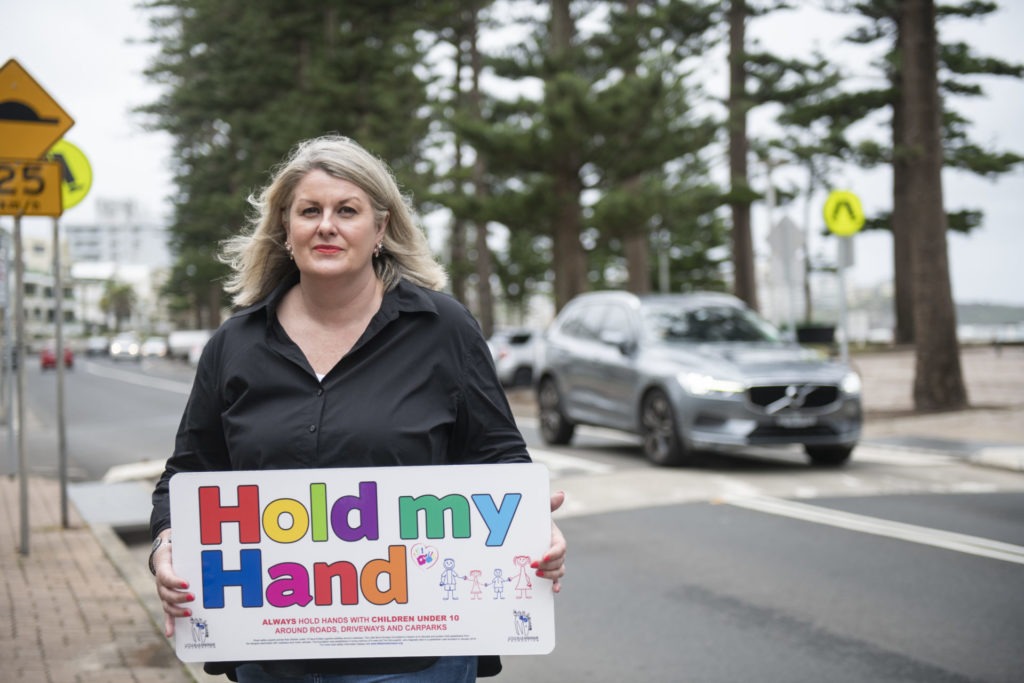January 6, 2014 was the date my life changed forever. In the mother of all microsecond moments.
Day one of our family holiday in the beachside town of Macmasters Beach is forever etched into our hearts and minds. There is no escaping the reality of what sadly occurred. Everyday when I wake up, I am reminded of a life that was so idyllic and sadly is now no longer.
My first-born son, Tom, was fatally struck by a 4WD vehicle travelling at 53kph. He was just 4 years old at the time of his untimely and devastating death. He was the most gorgeous, sweet-natured, joyful, and loving son, brother, and grandson that we could have ever hoped for. The intense shock caused our family such immense suffering.
In the 12 months following Tom’s death, and as a Registered Nurse of 20 years clinical experience, I began to analyse the factors which may have created the “perfect storm of conditions” that contributed to Tom’s death. In the case of every fatal and non-fatal crash, there are always multiple factors at play, and not a singular answer as to the ‘why’ of it.
Tom’s coronial inquest in November 2014 highlighted this harsh reality. My mind questions unrelentingly “How did this come to happen to our darling little boy?”
As human beings we need to make sense of terrible tragedies. One thing was for certain: my husband David and I felt a strong call to action, and our grief led us to establishing the Little Blue Dinosaur Foundation (LBDF). It has become Tom’s precious legacy.
As LBDF’s CEO and its one and only volunteer, I have been able to bring a determined purpose back into my life through road safety advocacy.
My greatest hope is that LBDF can help save other children and families from what we have endured.
LBDF advocates for children’s road safety in Australia through community education, government campaigning and the implementation of local, state, and federal road safety initiatives.
To date, 63 out of 537 LGAs around the country have partnered with us to help keep child pedestrians safe at ‘holiday time’ by displaying our colourful signage reminders. This alone has reached millions of locals and holidaymakers with our important message to ‘slow down’ and ‘hold my hand’.
LBDF is also now raising funds for a new initiative: our Road Trauma Grief Support Packs, for families who suffer the unimaginable tragedy of losing a child to road trauma. We’re hoping to raise $150k to fund the 12-month long care packages, each containing vouchers for child care, cleaning, domestic, and cooking services.
The first year after Tom’s death was the most difficult for me. I just couldn’t function. I was relying on extended family and friends to help with the day-to-day of keeping the household going. But not everyone has such support, and we’re hoping our Grief Support Packs will make that first year even a tiny bit easier for affected families.
Shockingly, 430 much-loved Australian children including Tom have lost their lives to road trauma since 2014. It averages out to one child per week, on par with the equally sad domestic violence statistics.
Child road trauma needs to be up front and centre on the national road safety agenda and on the radar of every politician in this country.
It is my firm belief that more LGAs need to step up and collaborate with us on our child road safety initiatives. In Australia the most common cause of death of children aged 1-14 years is ‘land transport accidents’ aka road trauma.
I’ve read that statistic many times over the years, and I feel much frustration that it never ever changes.
Keeping our children safe in our community is a bipartisan issue that desperately needs attention. We cannot do it alone… sadly, 430 children will never reach adulthood nor their full intended potential.
If 430 children lost their lives in one singular event, I can well imagine the helpful and swift response but as the statistics trickle in over time – this Australian child road trauma crisis continues to go unnoticed, which compels me to speak out and do all I can.
Left behind in the wake of road trauma are bereaved parents who are also victims of road trauma.
Research indicates parents who lose a child are an extremely vulnerable group and that the death of a child is considered the worst stressor that a person can ever go through. Bereaved parents, particularly mothers, are at increased risk of suicide, depression, anxiety, PTSD, Complex PTSD, panic disorders, substance abuse, immune and cardiovascular disorders including developing cancer.
As a bereaved parent I share this lifesaving information with you:
- Children aged 10 years and younger MUST have their hands held near roadways, driveways, and car parks because their cognitive, physical, and perceptual abilities are limited. They CANNOT keep themselves safe in the traffic environment. Children can be focused on fun, excitement and recreation. Road safety is not always at the forefront of their minds.
- SLOW DOWN when you are driving. Understand that if you collide with a pedestrian or a cyclist at speeds of 50km/hr and greater that individual has a 0-10% chance of survival.
- We can ALL make a difference together from the ground up ….as parents, carers, motorists, and politicians. The responsibility to prevent child road trauma I believe is shared.
The loss of Tom still hurts our family a great deal almost 8 years on. I have accepted that it will remain this way. There is no way of ‘getting over it’, despite others suggesting you will ‘find peace’ eventually.
I firmly believe “You can’t change what happened to you BUT, your story can change what happens to somebody else.”
For more information on the Little Blue Dinosaur Foundation, and to make a donation to the Road Trauma Grief Support Pack appeal: www.littlebluedinosaur.org

